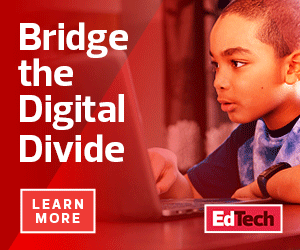EDTECH: If intentionality is key to effective use of educational technology, how can educators apply this in practice?
BEZANSON: If you just give a student a tablet, you open up a world of distraction. I think what a lot of educational establishments end up doing, since they’re nervous about opening up a world of distraction that a tablet or a laptop can bring, is they don’t introduce tablets and laptops.
For us, the intentionality is that we introduced a tool that can only be used in the way we designed it to be used. The tablet is a curriculum distribution device and a crowdsourcing platform where teachers put their syllabus and students take quizzes and polls during class so the teacher gets real-time results. The students still do all of their homework on paper, but they use the tablet to access the curriculum and deliver feedback to teachers.
Middle school kids are prone to rambunctious behavior, so we had to figure out a way that the tablet could be “stupid” 90 percent of the time. In other words, we didn’t want a smart device in the classroom. We wanted a device that would only connect to the resources that the teacher was pushing to it.
READ MORE: Learn how K–12 schools can measure ed tech ROI.
EDTECH: Some educators have concerns about potential negative effects of screen time. Are these concerns legitimate?
BEZANSON: They can be really distracting, especially if the student is looking at a screen the teacher can’t see. Our teachers love that students can utilize the tablet, but it’s a controlled environment. We’ve even gotten to the point now — it’s taken some significant programming — where a teacher can send a link to a YouTube video without allowing them to access the entire YouTube site. Our teachers have embraced it because they know they can send kids to a video without fear of that opening up everything as a distraction.
The “uh-oh” part of this — the notion of tech as a potential distraction — is why we created the program for our students that we did. It’s called SPORK, like the old spoon-fork combo utensil they gave away at the local fried chicken or BBQ joints. Its intentionality is the point: There’s an intentional spoon or spoon-fed part, and there’s an intentional fork part, that teachers or students will want to grab themselves.
It’s a pervasive need in American education. It’s a common topic among educators, too: finding the balance with tech. That’s why we license our SPORK tech for other schools and districts: It is a modern need, not yet fully met, due to the rise in the presence of tech in all of our lives.
Watch experts discuss the benefits and obstacles connected to screen time.












